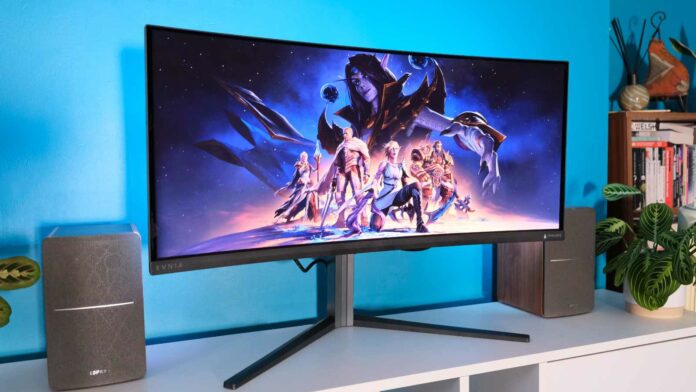Recognising the sheer popularity of Evnia 34M2C8600, Philips has returned with a stripped-back version, hoping to make its QD-OLED ultrawide a touch more affordable. Evnia 34M2C6500 isn’t without its sacrifices to reach a sub-£700 price tag, but it stands tall as one of the best gaming monitors I’ve used with a ton of value.
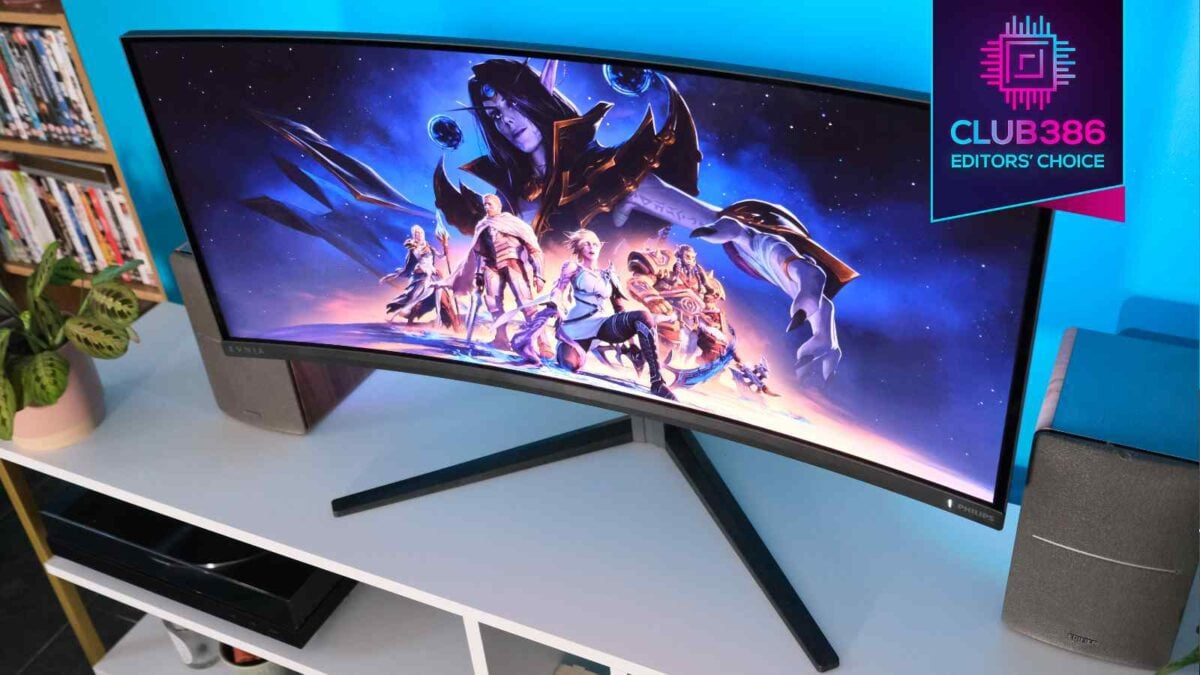
Philips Evnia 34M2C6500
£700 / $750
Pros
- Unrivalled colour accuracy
- Great value
- Toolless build
- Built-in Ambiglow RGB
- Three-year warranty
Cons
- Text fringing issues
- Poor cable routing
Club386 may earn an affiliate commission when you purchase products through links on our site.
How we test and review products.
Over the past couple of weeks, Evnia 34M2C6500 has reaffirmed my love for 34in ultrawides. At 3440×1440, it’s simply a joy to work with and to game on when titles support 21:9 aspect ratios. Perhaps most importantly, it’s shown me that RGB doesn’t have to be a gimmick because Ambiglow offers a glimmer of hope for integrated lighting.
Specs
| Philips Evnia 34M2C6500 specs | |
|---|---|
| Screen size | 34in, 1800R curve |
| Resolution | 3440×1440 |
| Refresh rate | 175Hz |
| Response time | 0.03ms |
| Panel technology | QD-OLED |
| Variable refresh rate | Adaptive Sync |
| HDR | DisplayHDR True Black 400 |
| KVM switch | Yes |
| Ports | 3.5mm headphone output (x1) DisplayPort 1.4 (x1) HDMI 2.0 (x2) USB 3.2 Gen 1 Type-A downstream (x2) USB 3.2 Gen 1 Type-B upstream (x1) |
| Speakers | No |
| Features | Ambiglow RGB |
| Warranty | 3 years |
| Price | £699.99 |
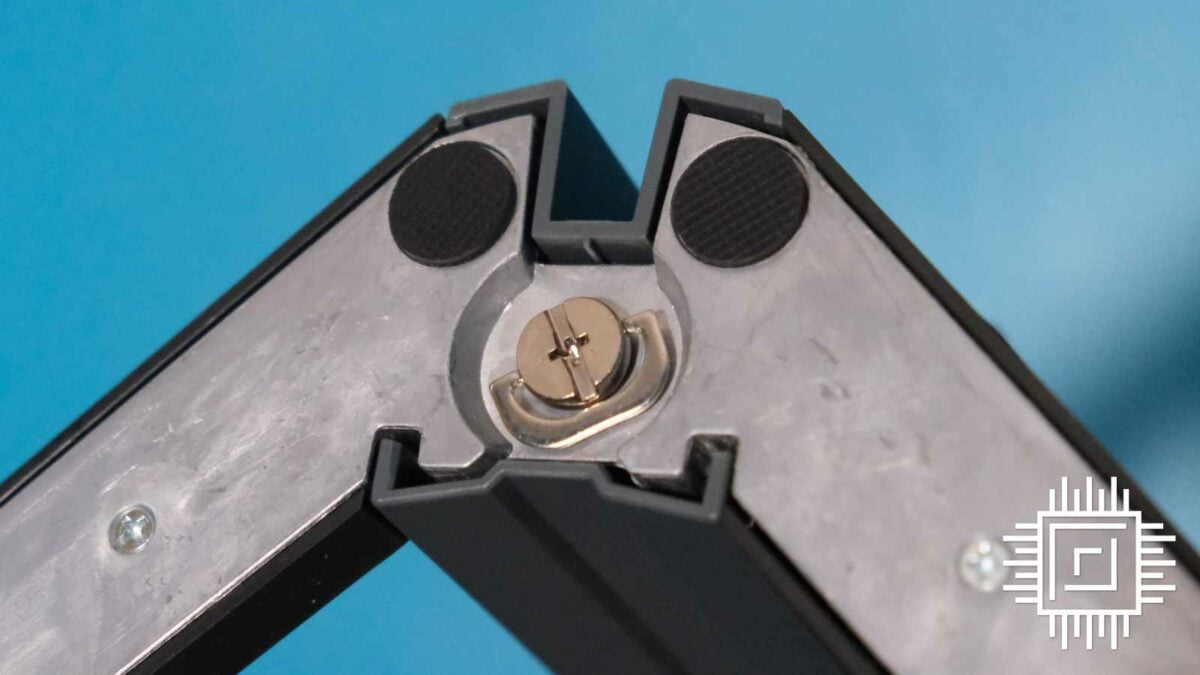
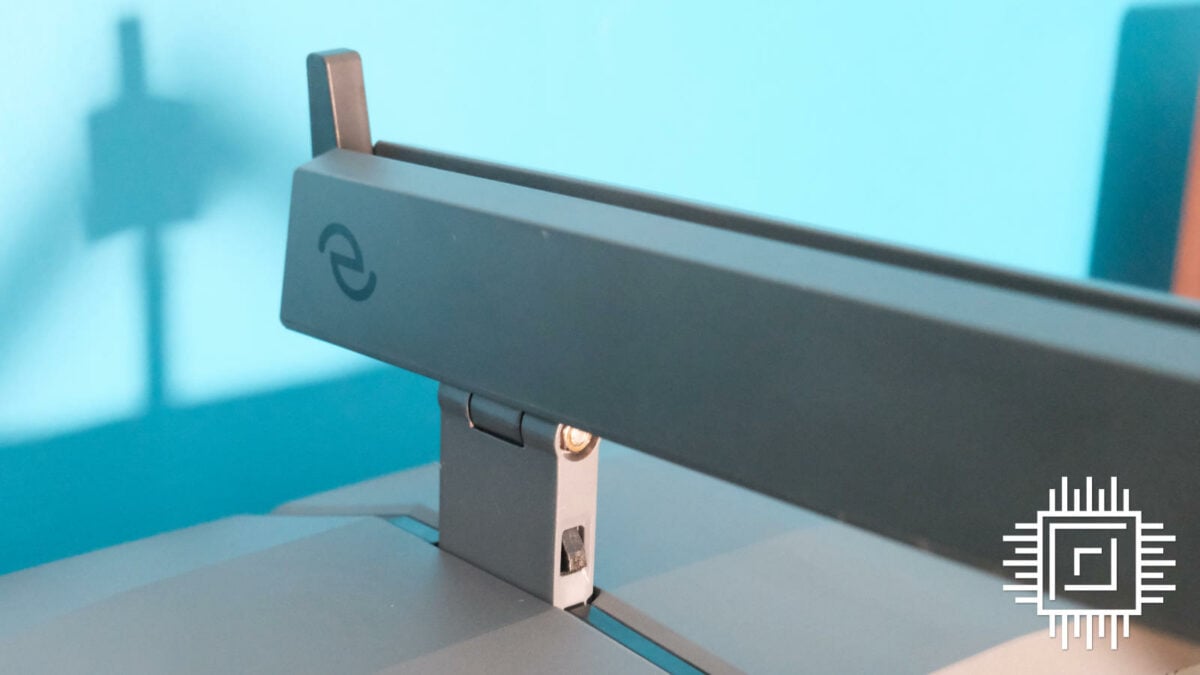
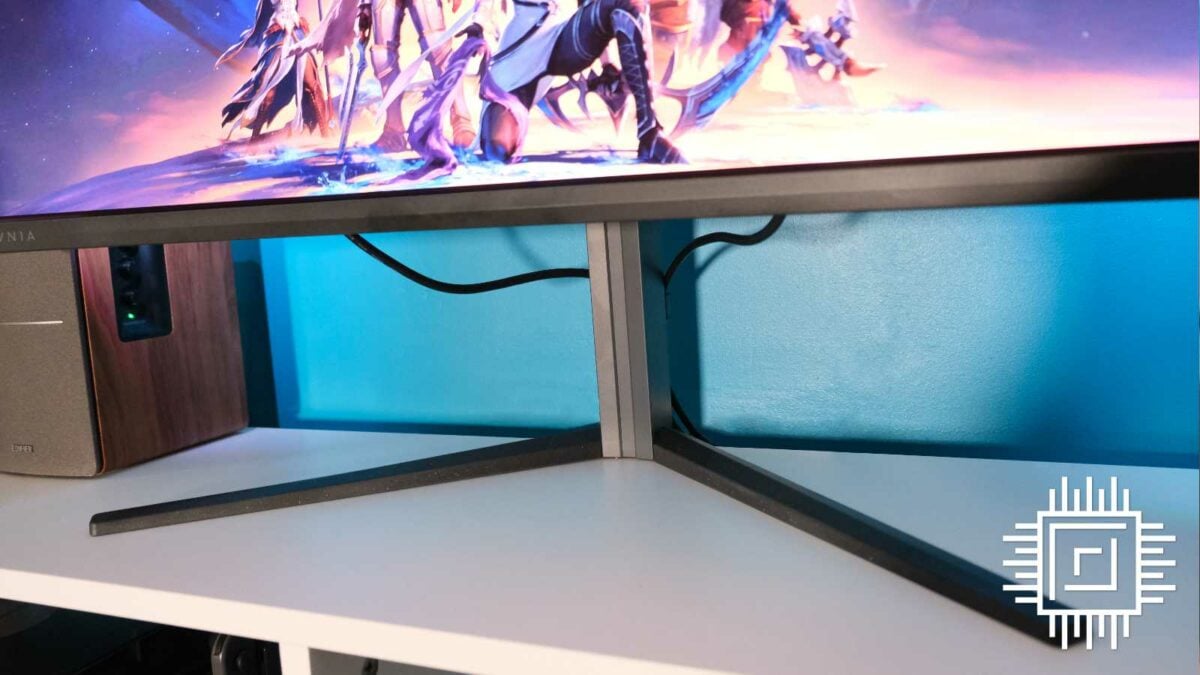
Design and features
At a glance, you’d be forgiven for mistaking Philips Evnia 34M2C6500 for another unassuming display with its matte black chassis. After all, the entire build is noticeably plastic, with the same splayed feet I’ve complained about several times before. It doesn’t feel cheap, but the stand especially lacks the premium of its metal alternatives.
The pros outweigh the cons here. Evnia 34M2C6500 is still sturdy and screams quality despite using 85% recycled plastics. In return, makes it easier to piece together with no tools or awkward screws. Once it’s on the stand, you can swivel it -/+ 30 degrees, tilt it -5 or +20 degrees, and have 130mm of height adjustment to play with. It’s unlikely you’d want to pivot an 1800R curved ultrawide into portrait mode since there’s not a lot of room, but if your fantasies take you there, you’ll have to settle for using the 100×100 VESA mount.
My only complaint with the stand is cable management. While there is a trench along the rear leading up to Philips’ signature built-in headphone holder, you’ll still notice hanging wires reaching towards it. I’d prefer proper routing that leans into the downward-firing ports. Even a central run along the bottom wouldn’t go amiss for keyboard and mouse cables to slip underneath without lifting the monitor from the desk. As it is, you’ll need to place them over the feet instead, which is a little unsightly.
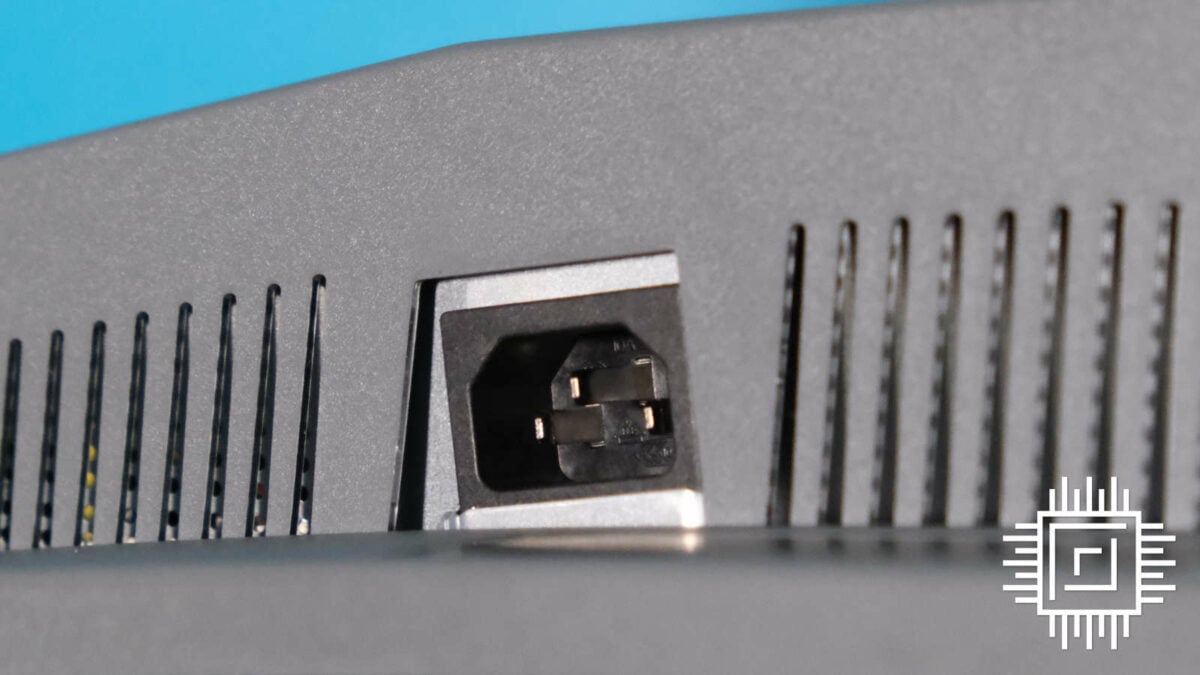
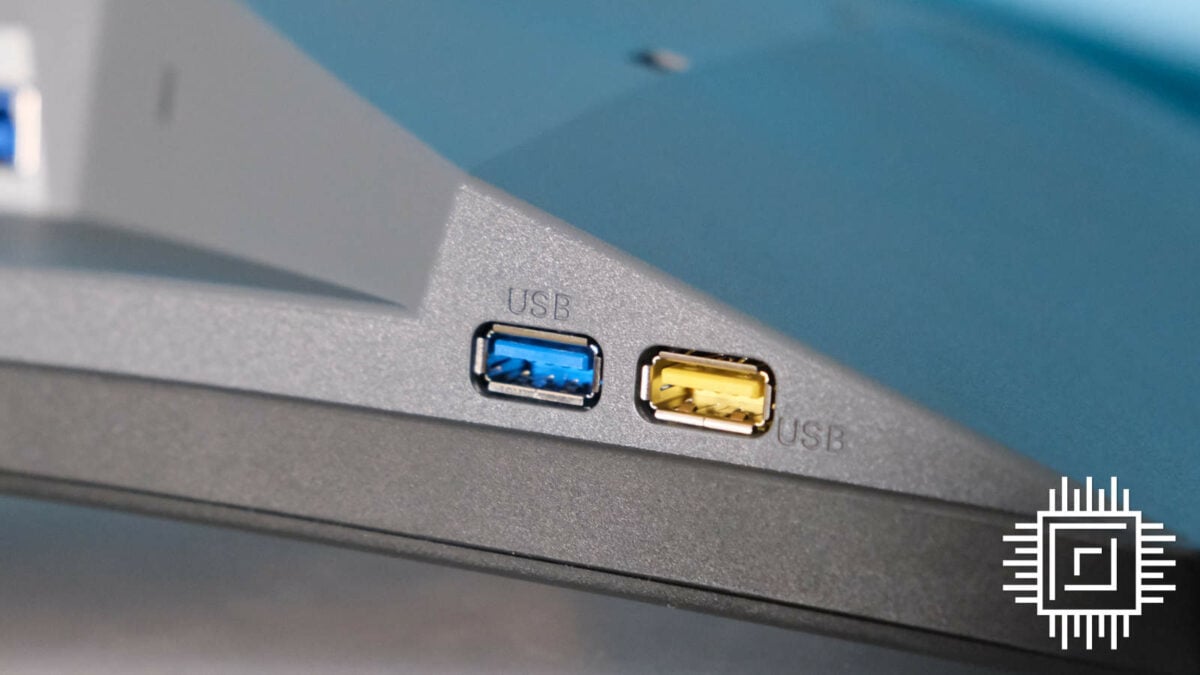
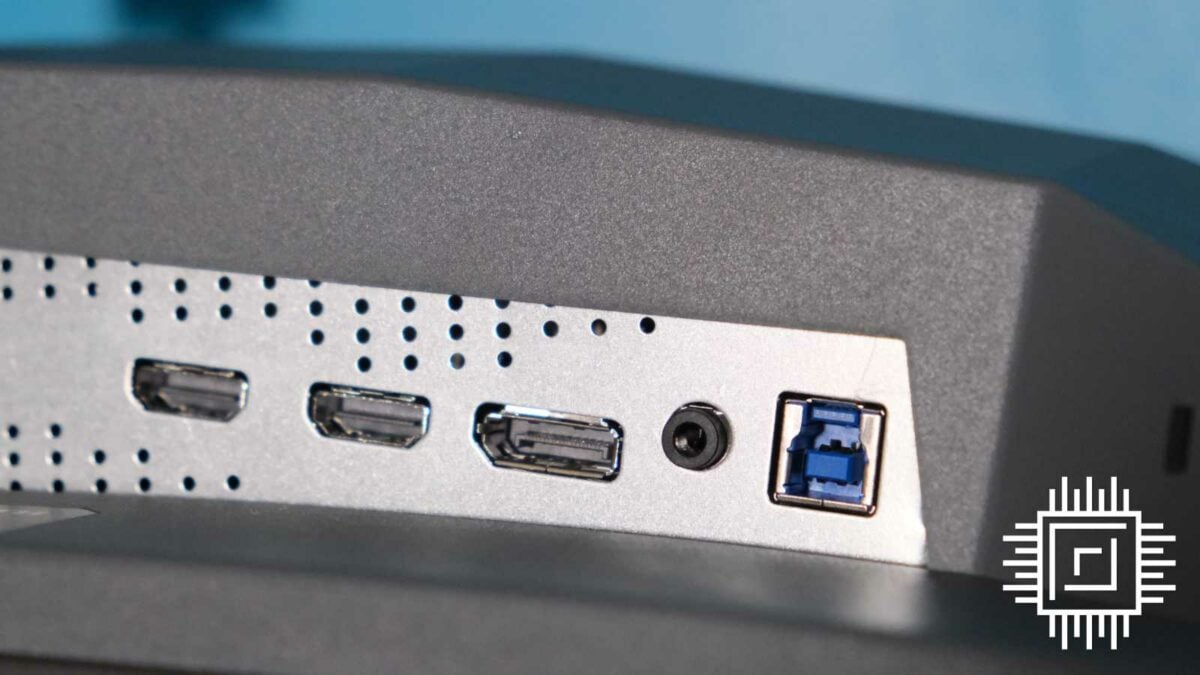
Together, Philips and AOC are the kings of KVM switches, so it’s a little disappointing to see there isn’t one here. Such is the sacrifice to cut costs, but it instead features a USB hub with two Type-A downstreams and a Type-B upstream. This lets you control just one device with your peripherals despite MultiView letting you see dual sources via HDMI 2.0 or DisplayPort 1.4. Power delivery is also missing, but the yellow Type-A does support fast charging even when the display is on standby.
It’s not all business in the back, though. The ace up Evnia 34M2C6500’s figurative sleeve is a butt-load of RGB. I’ve seen plenty of monitors unceremoniously chuck the feature on, but they always fall flat with barely a flicker on the wall behind it. Ambiglow hits different, as 14 LEDs work in tandem with a dedicated processor for AI-enhanced lighting.
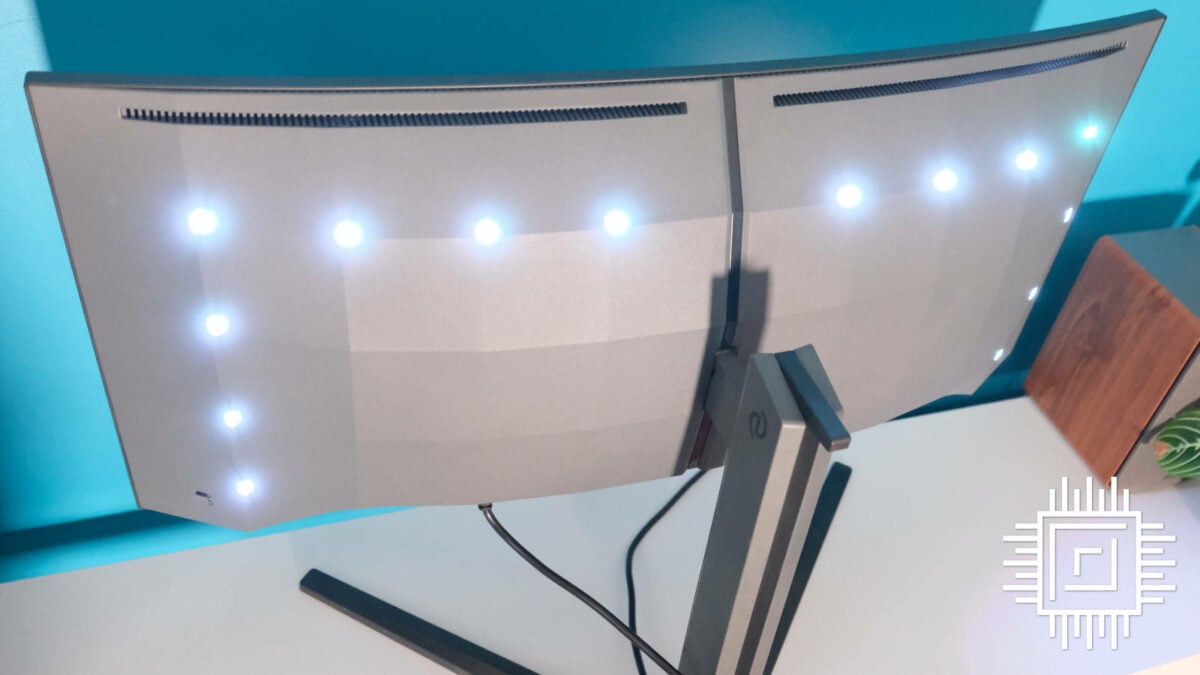
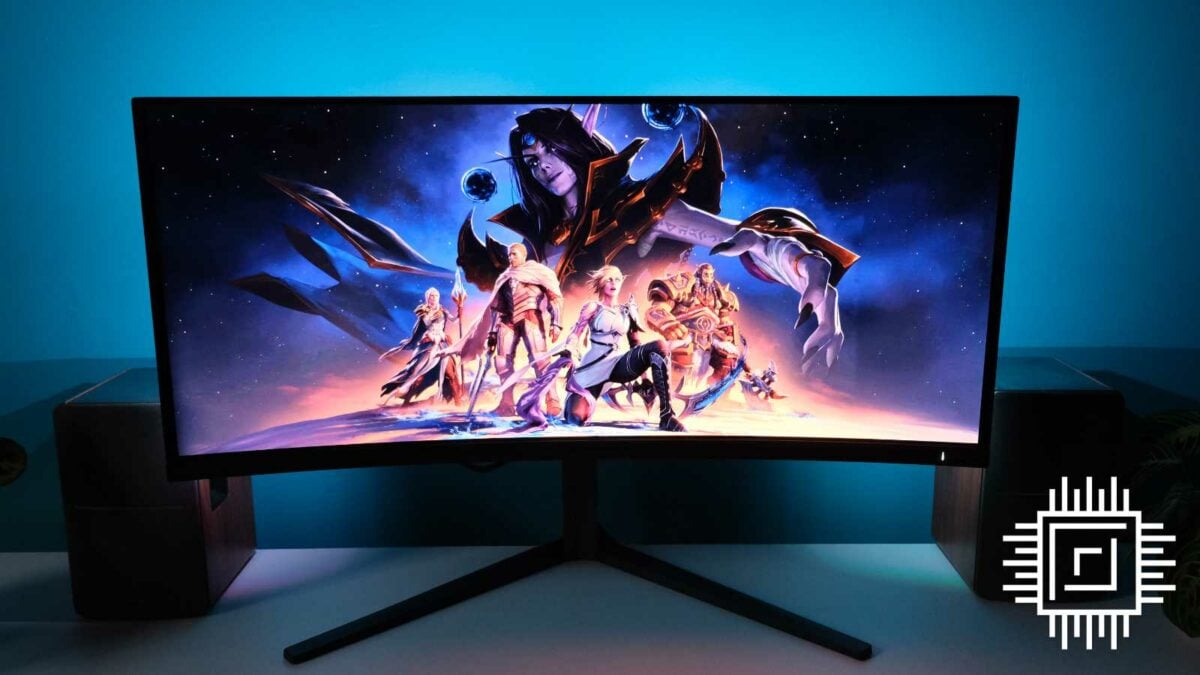
Some settings work better than others, but most do what they say on the tin. Colour Breathing slowly pulsates, Colour Wave wipes from side to side, and Colour Shift is a choppier version of Wave. Starry Night sounds like it should twinkle, but bulbs intermittently switch on and off in a rather harsh manner. You can select from three speeds, three brightnesses, and seven colour options, including rainbow.
Follow Video is one of the main highlights, copying on-screen hues onto the wall behind you. It works best in low light with the monitor as close to the wall as possible. Desk clamps help with this far better than the ordinary stand. My favourite, however, is Static Colour set to white. It sounds vanilla, but it’s the brightest of all the options and saves your peepers from playing in the dark. A well-backlit wall does wonders for your health.
Dedicated strips from Philips Hue and Govee generally do a better job because they’re brighter, but integrated LEDs avoid a lot of hassle. Since you’re not relying on a separate AI gaming sync box, there’s no desk clutter, no extra cables, and no refresh rate or resolution limitations via supported cables. It’s just ready to go.
As far as out-of-the-box solutions go, Ambilight on Philips TVs is the best, but Ambiglow is still ahead of the competition. The good news is that Club386 has spoken to Stefan Sommer, Vice President Global Marketing at TPV (Philips’ parent company), who expressed a desire to bring fully-fledged Ambilight to future monitors. That’s a prediction we’re eager to see come to fruition, even if it doesn’t help here.
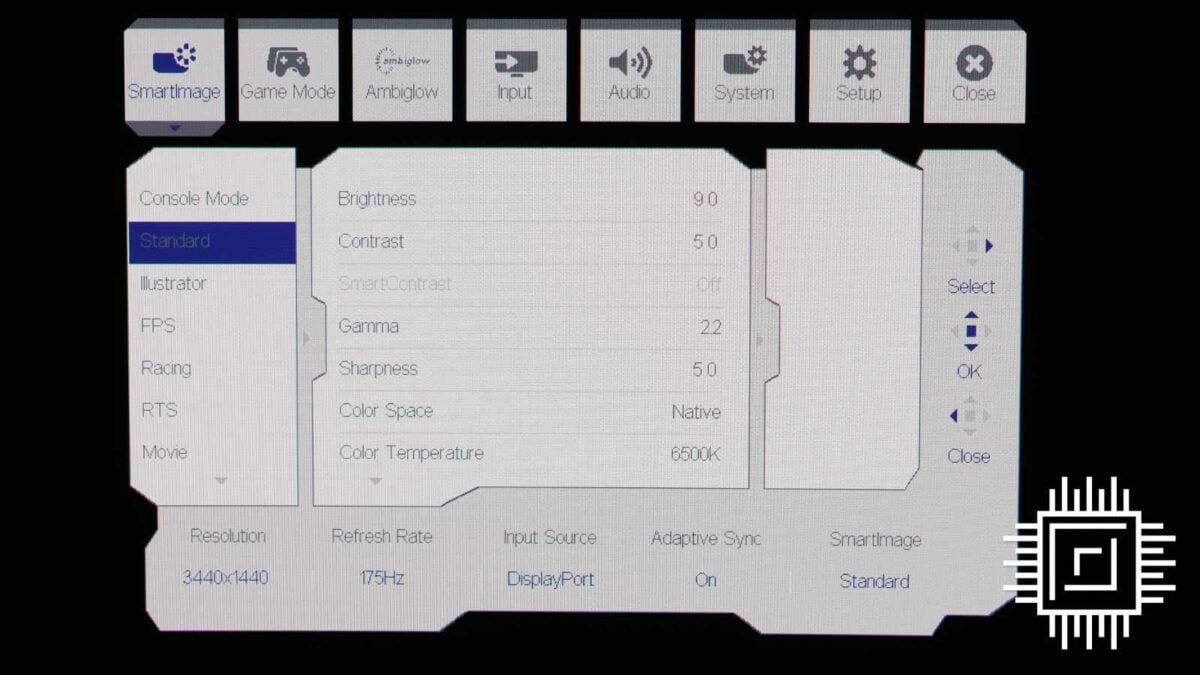
You can customise all of this via the on-screen display (OSD). The unusual frame is subjective, striking me as a little too gamer, but the user interface is one of the most intuitive I’ve come across. It bucks the trend of making OSDs too compact, instead presenting every option you want clearly at a glance. There will be no endlessly digging through menus to find what you’re looking for here. If you want to change Ambiglow, you know it’s the third tab in.
Performance
Reacquainting myself with an ultrawide for the first time in a couple of months, 34in is perhaps the ideal size at 3440×1440 with just shy of 110 PPI (pixels per inch). In the real world, this shines a spotlight on the finer details without blowing them out of proportion or packing so many pixels that you lose specifics.
Evnia 34M2C6500 makes great use of its gentle 1800R concave, offering immersion in games without being overbearing. Although flat monitors will always be better for editing photos and video, I’m an advocate of the health benefits such bends provide. Conforming to the shape of your eye helps reduce fatigue as you process information from your peripheral. Call it a placebo or direct confirmation, but as someone who stares at a screen for over half the waking day, I feel far more comfortable with the indent than without.
In my opinion, sticking with QD-OLED is a smart choice. The panel grants a better perceived brightness than standard OLED alternatives, albeit not enough to fight against the glare of direct sunlight. As with all variations, it’s just a question of where you place it. The punchy colours are immediately noticeable in vibrant games like Hades 2 or Ghost of Tsushima, which makes it all worth it.
Text clarity is an ongoing issue with QD-OLED because it features a triangular RGB subpixel layout. Some people are more sensitive than others, noticing a fringing or blurring around letters. Personally, I can’t see it until I get so close to the screen that it becomes a health concern, but your mileage may vary.
There’s no question Philips has gaming chops, but you’ll need to use DisplayPort 1.4 for the full 175Hz refresh rate. HDMI 2.0 caps out at 100Hz with the full resolution, making it a slightly odd choice when HDMI 2.1 is so popular nowadays. Use the right cable, and you’ll experience all its glory, including a 0.03ms grey-to-grey response time, adaptive sync, and DisplayHDR True Black 400 support.
As expected, Evnia 34M2C6500 shines in FPS games thanks to the extra peripheral vision and high refresh rate. My ageing bones need all the advantages I can get in Rainbow Six Siege and Battlefield V, so I’ll take all that comes my way. However, since immersion is the name of the game, character-driven titles come to life more than anything else. Whether you’re stepping into Geralt’s shoes and seeing The Witcher 3’s Continent in all its glory or feeling the fear as things emerge from the pitch-black darkness in Alan Wake 2, there’s a lot to love.
Game support is something of a bugbear with all ultrawides. When it works, it’s a beautiful display that wraps around you and transports you to another realm. When it doesn’t, it makes for an inconsistent experience. Some games outright don’t feature 21:9 aspect ratios, forcing you into 16:9 with black bars instead. Others give you 21:9 support during gameplay but jarringly plunge you into 16:9 cutscenes. This has improved with time, but even games like Elden Ring don’t quite hit the mark you’d expect. Naturally, this has nothing to do with Philips, but it is something to note before committing to any one form factor.
Colour accuracy and gamut
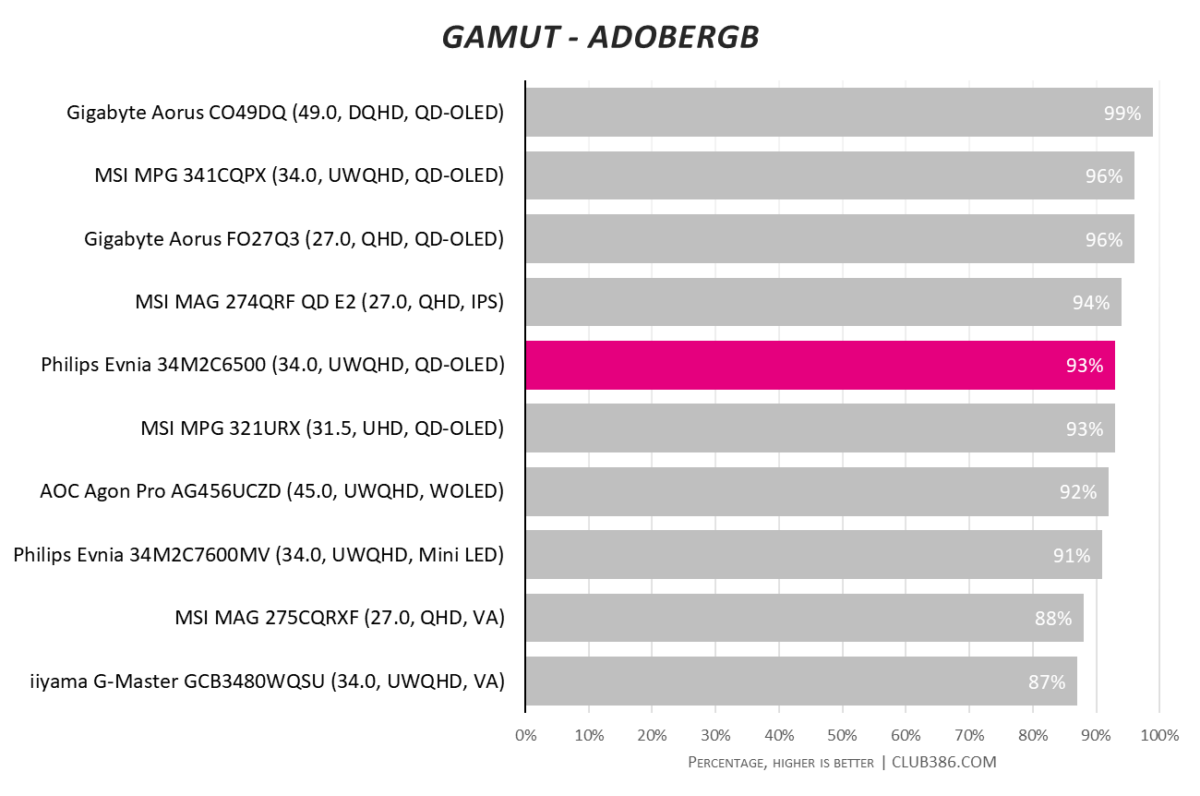
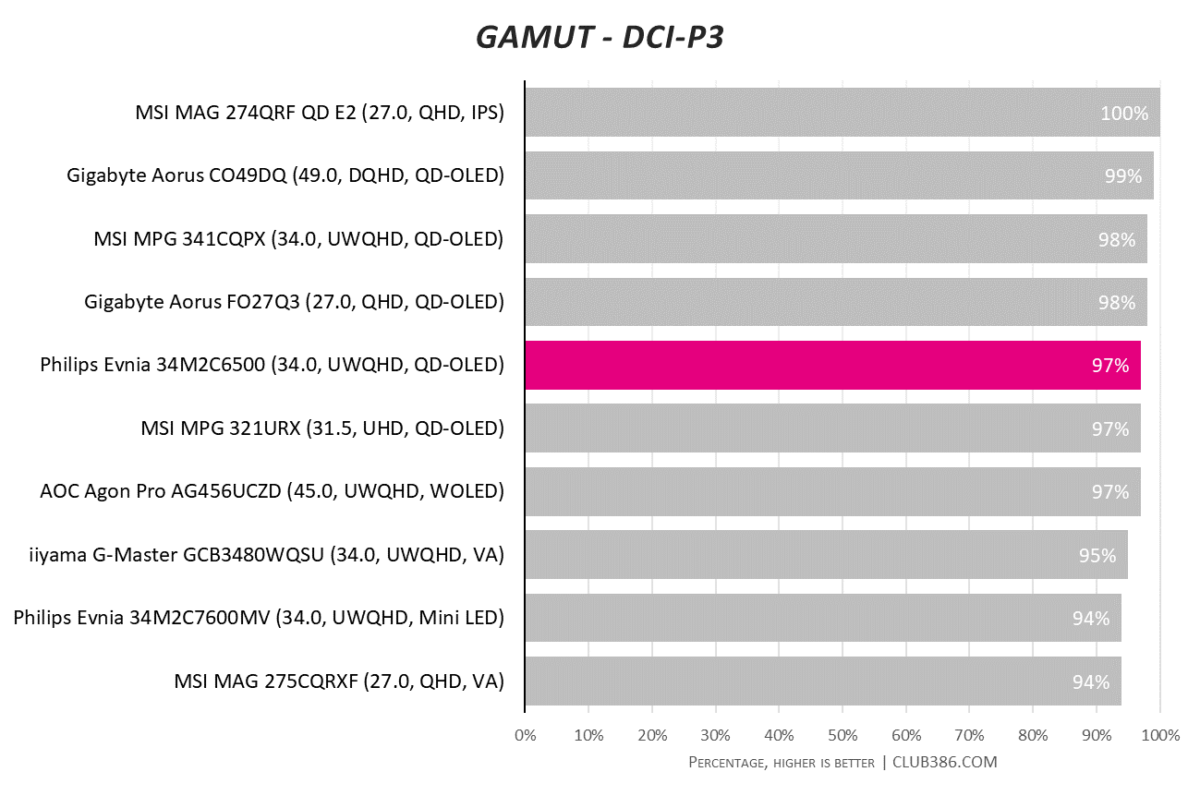
These days, it’s common practice for monitors to make you jump through hoops to find the right settings, diving in and out of presets. Philips Evnia 34M2C6500 bucks this trend, greeting you with a beautiful calibration right out of the box. By our tests, you’ll get 93% of AdobeRGB and 97% of DCI-P3 without a single bit of tinkering.
As usual, the display comes equipped with a range of different colour spaces and profiles to select if you fancy something different. I can’t recommend any since all are worse than the default calibration and some outright tint the screen blue or yellow. That said, there’s merit to LowBlue Mode, Easy Read, and Economy when it comes to saving your peepers at nighttime or lowering power consumption.
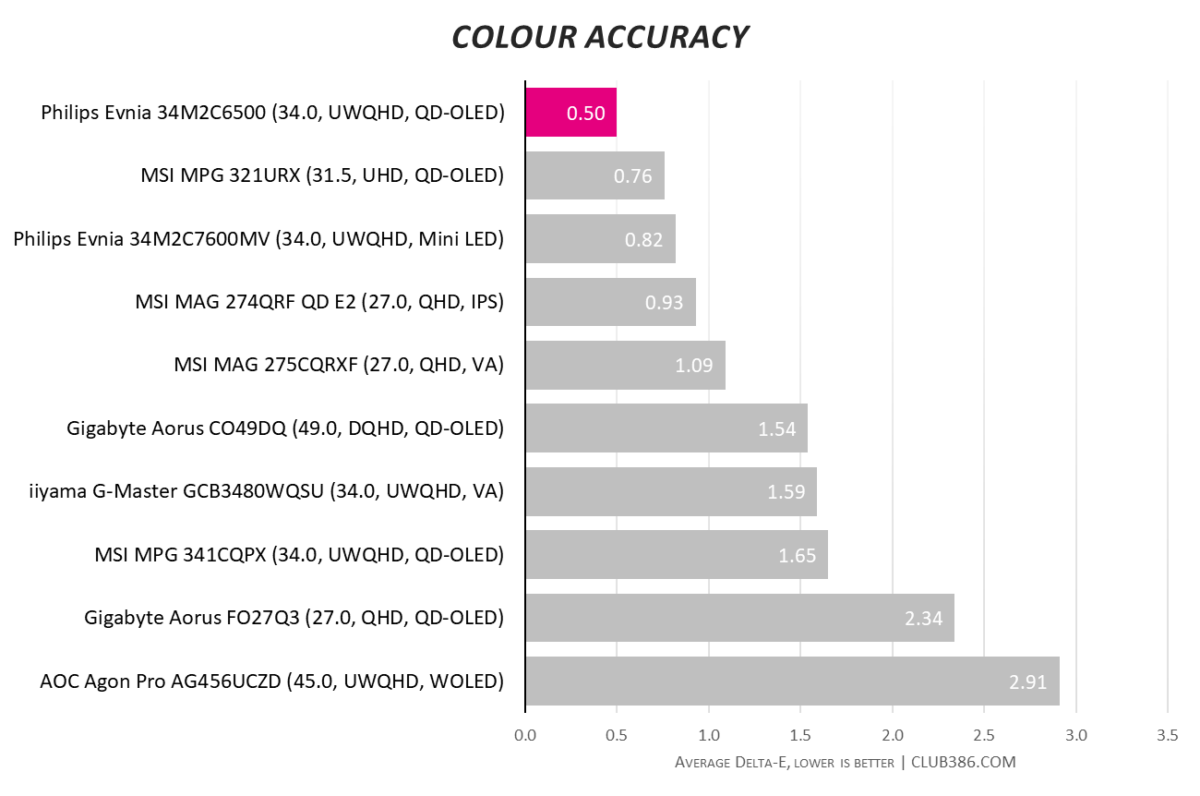
Philips custom calibrates every monitor before shipping it out, usually with the mandate that it sits below an average of 2.00 Delta E. For true accuracy, we prefer it under 1.00. With claims this particular sample hit 0.74 Delta E before shipping, it was already on track to take the crown for the best colour accuracy we’ve ever seen, but the screen outdid itself.
No other monitor has passed through our labs with such an accurate reading, reaching as low as 0.50 Delta E. Outliers climbed as high as 1.67 Delta E in the greyscale, but this is just one of two instances where the display climbed above 1.00. Philips Evnia 34M2C6500 is not only one of the best we’ve ever seen but also supremely consistent.
Brightness and contrast
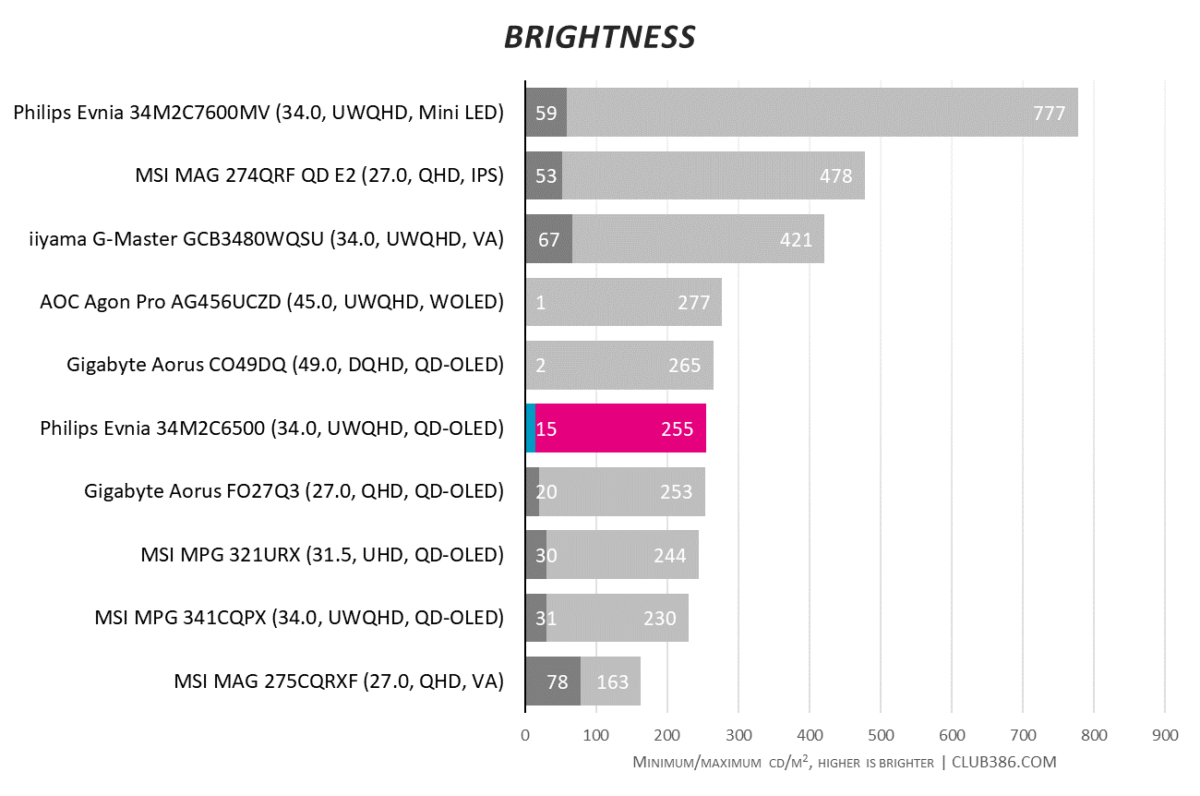
As an OLED gaming monitor, you can expect the usual swings and roundabouts. On one hand, the panel affords it near-infinite contrast ratios and perfect blacks, owing to the fact every pixel can switch itself off independently. This pairs well with DisplayHDR True Black 400 certification, giving an inky look that makes horror games absolutely terrifying.
Conversely, it has the same shortcoming as its competitors: low brightness. Philips Evnia 34M2C6500 fares better than most OLEDs, going as low as 15cd/m2 and reaching highs of 255cd/m2. Still, it pales against VA, IPS, and Mini LED alternatives, which all feature a dedicated backlight. Having used many at this point, I’m happy to say it doesn’t affect your experience too much, but it’s something to consider in truly bright rooms flooded with sunlight.
Screen uniformity
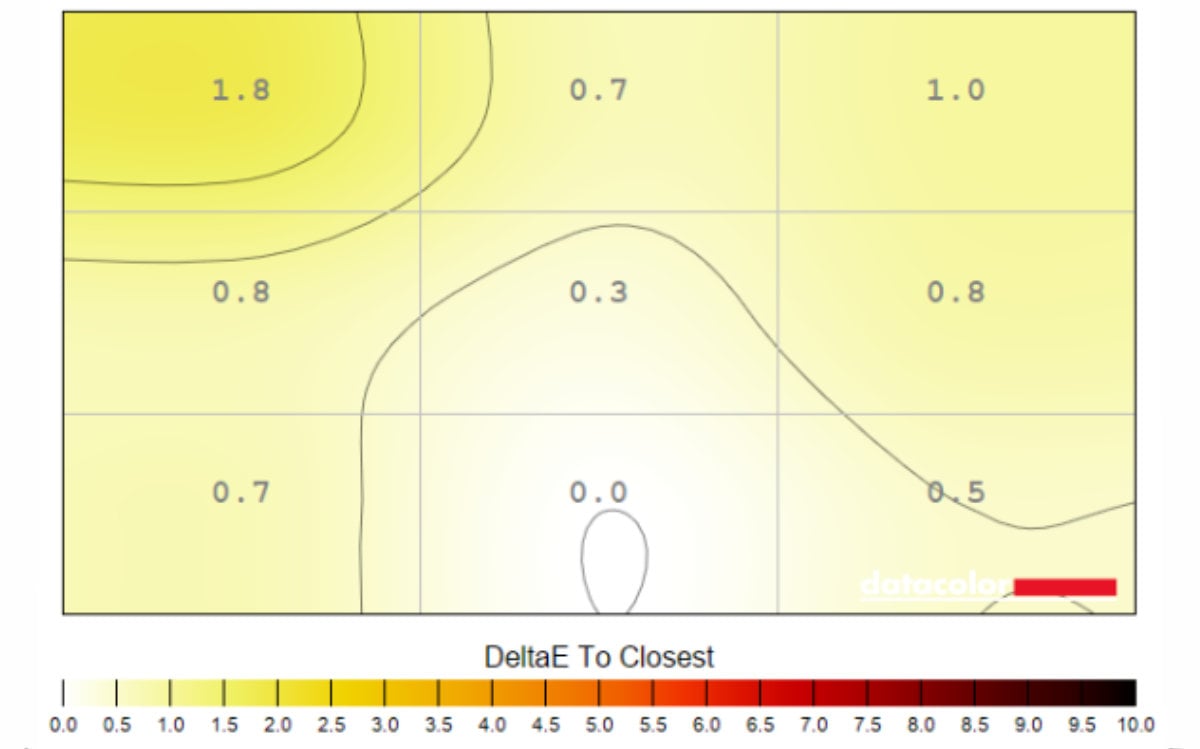
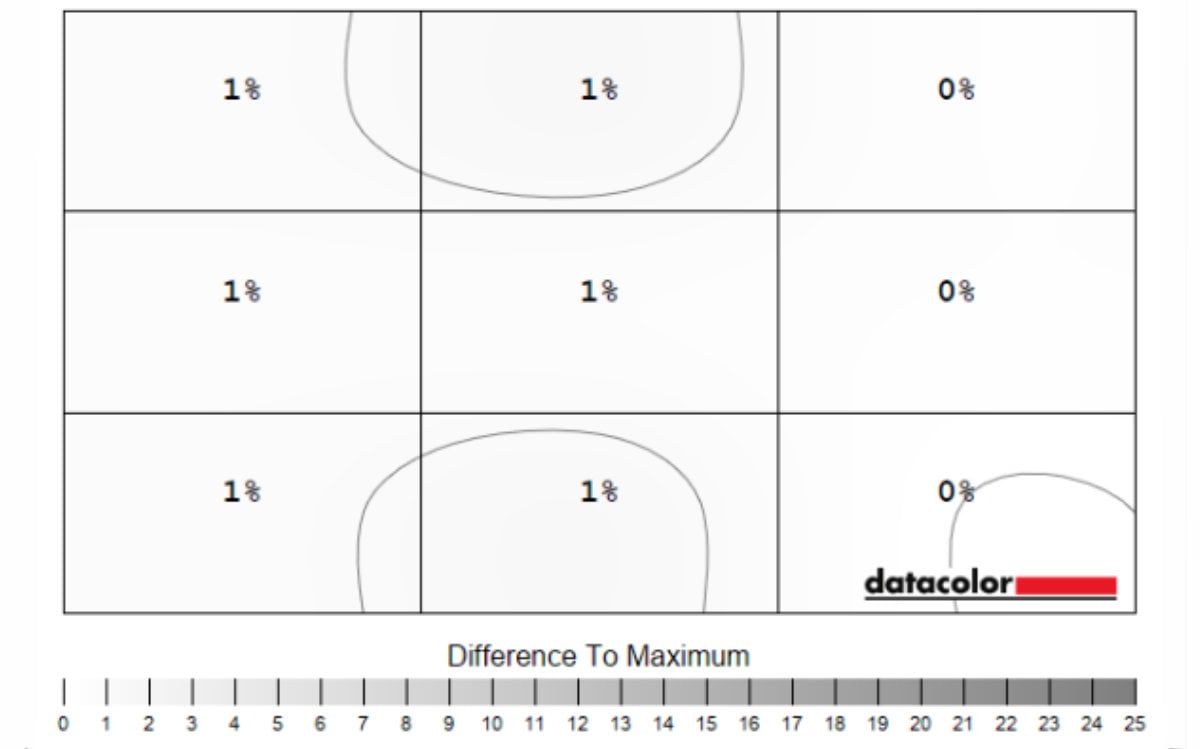
The bigger the screen, the harder it is to keep everything uniform. Fortunately, Philips has it down to fine art, endowing the ultrawide with a near-perfect showing from corner to corner. We consider anything less than 10% a win, making the sub-1% spread a resounding success. The top left might raise an eyebrow, spiking a little higher than the rest, but it’s not remotely noticeable to the naked eye.
Power consumption
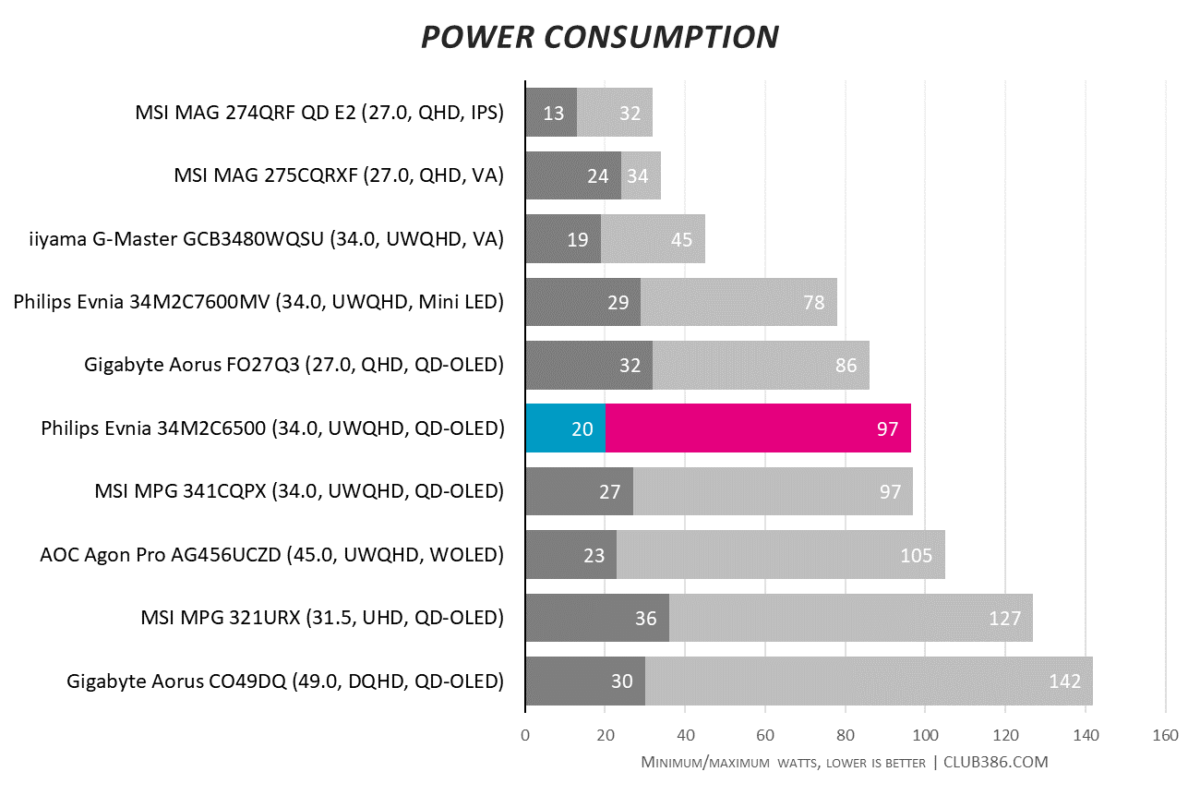
Despite their lack of brightness, OLEDs tend to chomp through a good chunk of electricity. Surprisingly, Evnia 34M2C6500 asks for little with a minimum of 20W, undercutting all its brethren. There are a handful of LCD panels that ask for less, but this is a fantastic start. I’m impressed the maximum doesn’t break triple digits at 97W, making it one of the more efficient organic choices. Better yet, this is with Ambiglow lighting on, which adds a couple of extra watts.
As individual pixels flutter between light and dark, your average usage will likely sit somewhere in the middle. Zipping about the bright New York skyline in Spider-Man Remastered, I observed peaks of 35.4W at the default 90% brightness. An added bonus is that it runs fairly cool compared to my Dell Alienware AW3225QF, which is so toasty it heats up the room around me.
Finally, I need to praise the inactivity dimmer that reduces brightness when there’s no movement on-screen. Since burn-in is a risk with OLED, stepping away from one always comes with added anxiety unless you switch it off first. Philips knows you’re not necessarily always active at your desk and takes care of it when you’re not. Smart stuff.
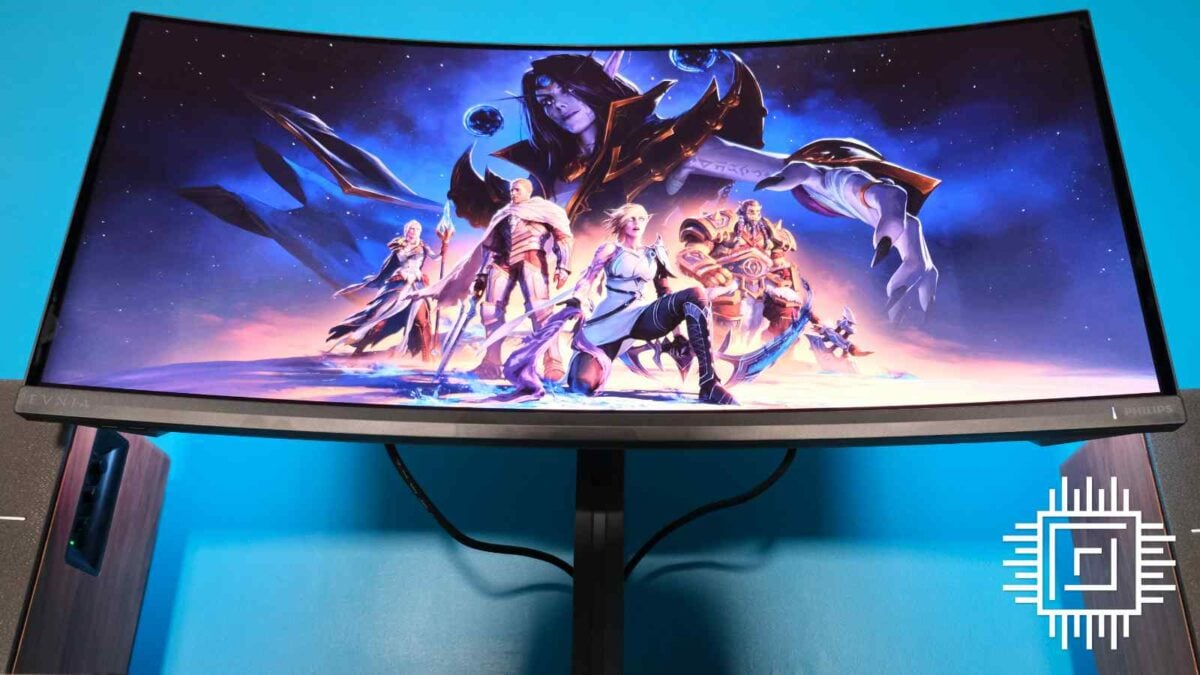
Price
Right out the gate, Evnia 34M2C6500 makes a great case for itself at £699.99. Looking at its rivals, MSI MAG 341CQP debuted in June at £1,100 / $1000, and Alienware AW3423DWF still sits at £879 despite approaching two years old. Ultrawide OLEDs of similar specs often reach fantastic lows via discounts, but this is the first time we’ve seen the MSRP guarantee such an affordable cost – relatively speaking.
You might be able to find better prices if you’re in the right place at the right time. Philips Evnia 34M2C8600 is currently £594.97 thanks to a Back to School Deal and features the same specs with speakers and better connectivity options. Generally, it’s as easy as going with whichever is cheapest at any given time, as both are dazzling OLED panels.
Conclusion
I have no trouble recommending Philips Evnia 34M2C6500, as its £699.99 launch price undercuts most of the competition. It makes concessions to get there, with no Type-C port or speakers and a full plastic build, but it keeps all the fundamentals. As far as entry-level OLED goes, you can’t go wrong with a 175Hz WQHD gaming monitor, particularly with the best colour accuracy we’ve ever seen. The only thing that should give you pause is the fact that Philips Evnia 34M2C8600 occasionally drops even lower.
Otherwise, I advise you to keep a close eye on Philips moving forward. Other companies could learn a thing or two about factory calibration, and I already miss Ambiglow hitting my back wall. Thinking of Ambilight possibly entering the picture with future models has me giddier than I’d like to admit.
Verdict: A positively glowing ultrawide QD-OLED gaming monitor that’s worth every penny.

